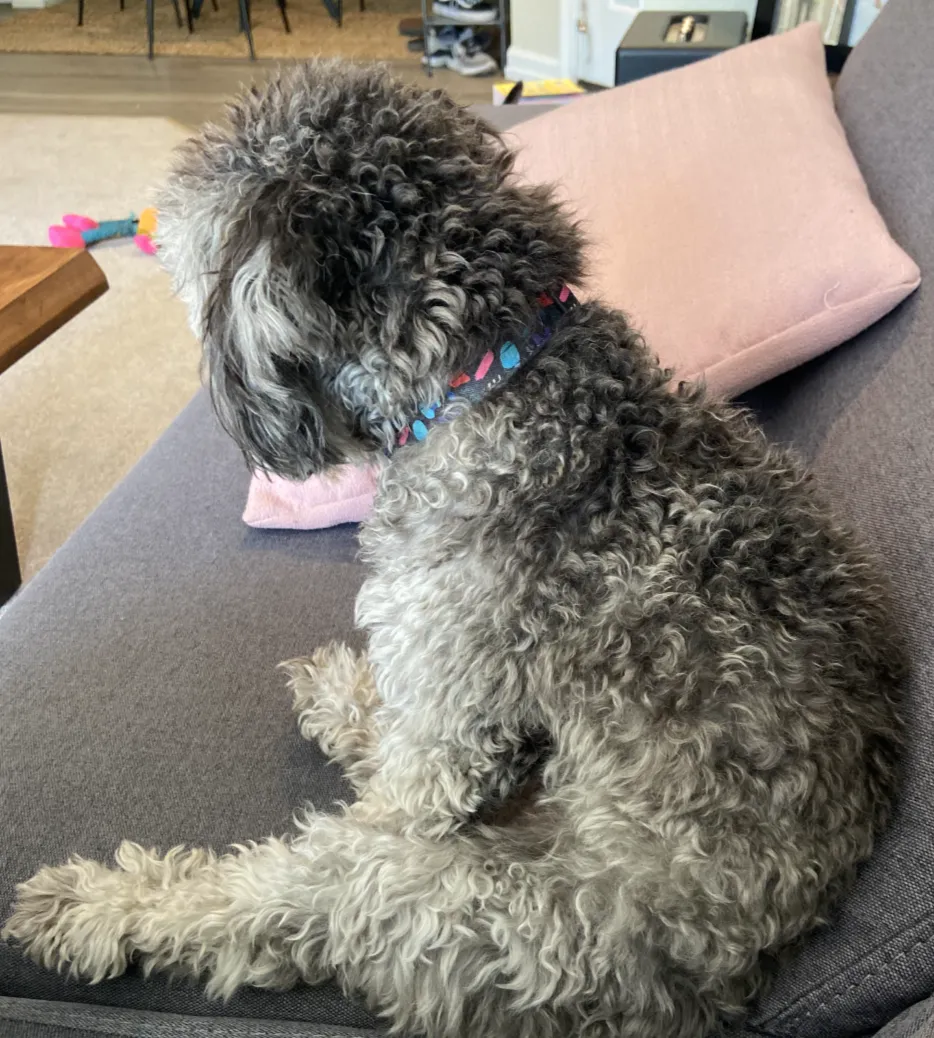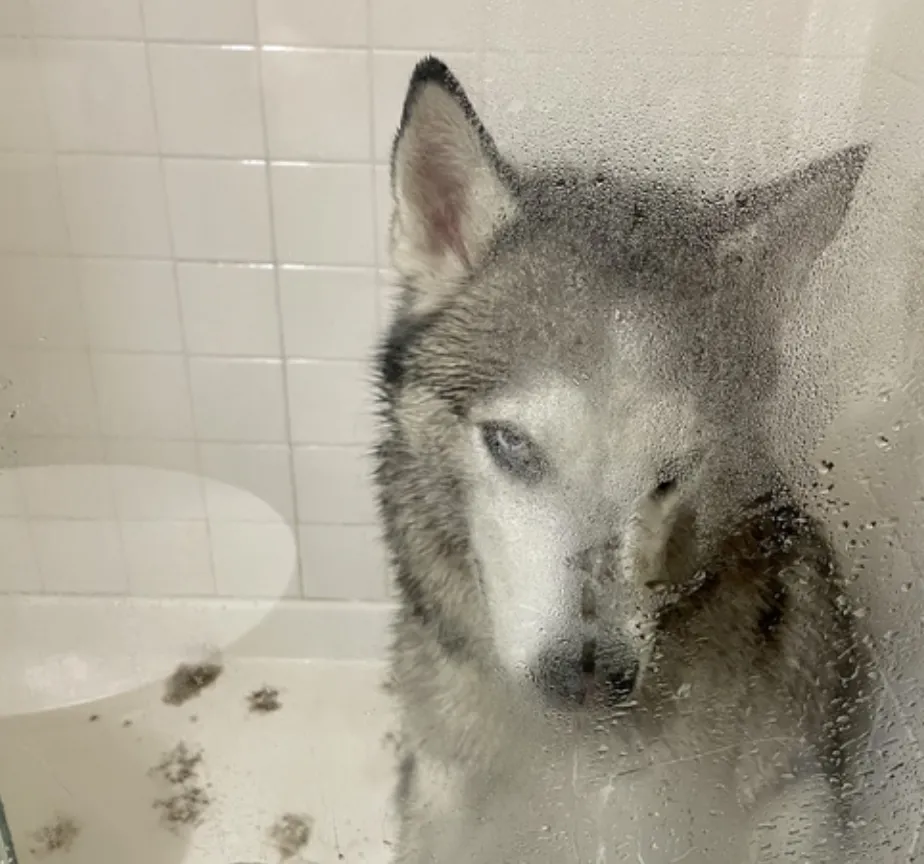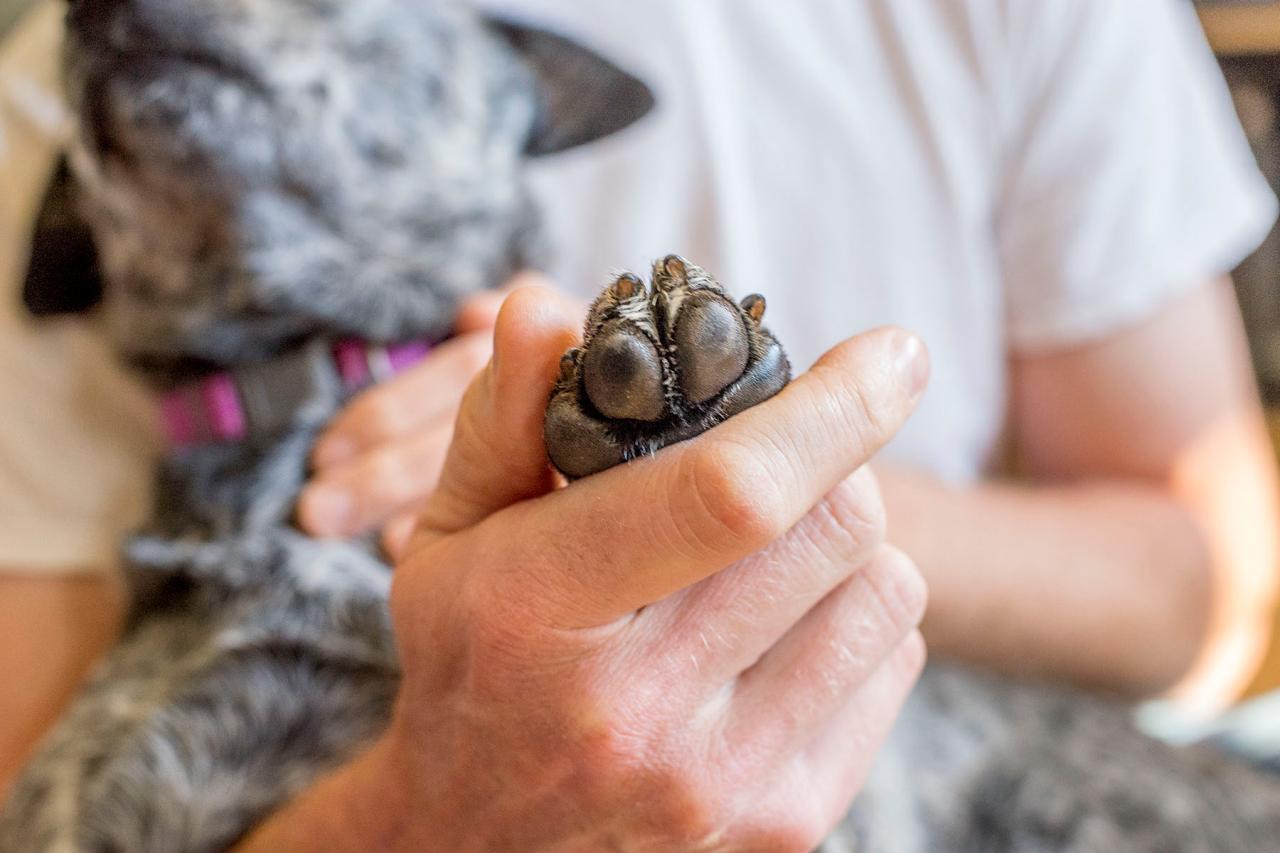Dogs have long been observed displaying a particular expression that owners often interpret as guilt. However, it is important to delve into the true meanings behind this behavior. By understanding the canine expression of guilt, we can gain insight into the emotions and communication methods of our beloved pets.
When dogs exhibit what appears to be a guilty look, their body language and facial expressions are crucial indicators. The lowered head, averted eyes, hunched posture, and tucked tail are commonly associated with this guilty expression. While it may seem conclusive that these behaviors signify guilt, it is crucial to recognize that dogs lack the ability to feel complex emotions in the same way humans do. Instead, their guilty expression may be a response to the owner's vocally heightened reactions, as dogs are exceptionally skilled at picking up on human behavior and emotions.
What's That Guilty Look For?
When it comes to our furry companions, it's not uncommon to find ourselves wondering if dogs can actually feel guilt. Are those adorable guilty faces a product of our own imagination, or do dogs truly experience this emotion? In exploring this topic, I came across fascinating research conducted by Dr. Alexandra Horowitz. She conducted a study examining "guilty" canine expressions and owner cues, shedding light on the truth behind these guilty looks. Additionally, we'll touch upon the concept of anthropomorphism and how it plays a role in attributing human characteristics to our dogs. So, let's dive in and uncover the secrets of that guilty look!
Anthropomorphism and attributing human characteristics to dogs
Anthropocentric tendencies arise when people anthropomorphize dogs, attributing human traits to them. This can lead to interpreting their behaviors as expressions of guilt or other human-like emotions without concrete evidence.
When individuals anthropomorphize their pets, they may interpret canine behaviors through a lens of human experiences and emotions. However, it is crucial to recognize that dogs have their own unique ways of expressing themselves.
It is important to understand that dogs cannot fully comprehend the concept of guilt in the same way humans do. While certain behaviors like avoiding eye contact or cowering can be mistaken for signs of guilt, they are actually appeasement gestures aimed at seeking approval from their owners.
To avoid misconceptions about guilt in dogs, experts suggest focusing on positive reinforcement training methods rather than punishing perceived wrongdoing. By rewarding desired behaviors and redirecting unwanted ones, owners can effectively shape their dog's behavior without relying on anthropomorphic interpretations.
By acknowledging the limitations of anthropomorphism and understanding dogs' distinct behavioral patterns, we can build stronger bonds with our furry companions while ensuring their well-being and happiness.
Dogs may give us their best guilty face, but whether they feel true guilt or just fear of getting caught is still a puzzling mystery,

Study on "guilty" canine expressions and owner cues
Dogs exhibit expressions and cues that are commonly associated with guilt, leading to anthropomorphic interpretations by their owners. A study focused on understanding these "guilty" canine expressions and the cues provided by owners. The research examined whether dogs truly feel guilt or if their behaviors indicate fear instead. While certain behaviors and signs are associated with guilt in dogs, researchers face a dilemma in determining the true nature of these emotions. The study highlighted the importance of not misunderstanding guilt and potential problems that can arise from misinterpretation. Furthermore, it emphasized the complexity of canine emotions and the need for further research focused on understanding dogs' cognitive abilities in relation to guilt.
Dr. Alexandra Horowitz's conclusion on the "guilty" look
Dr. Alexandra Horowitz, in her analysis of the "guilty" look in dogs, arrived at the following conclusions:
- Dogs' so-called guilty expressions are not necessarily a result of actual feelings of guilt.
- Instead, these expressions are more likely a response to their owner's cues and behaviors.
- The guilty look that dogs display may be an attempt to appease their owners and avoid punishment.
It is important to note that Dr. Horowitz's study did not definitively answer the question of whether dogs truly feel guilt. However, her findings shed light on the complex nature of canine emotions and highlight the need for further research in this area.
To better understand this phenomenon, it is recommended that dog owners focus on positive reinforcement training methods rather than relying on attributing human emotions such as guilt to their pets. Furthermore, ensuring clear communication between owners and dogs can help prevent misunderstandings and potential behavioral problems.
Unlocking the truth behind guilt in dogs: Are those puppy eyes an admission of guilt or just a plea for forgiveness?
Guilt or Fear?
When it comes to deciphering our furry friends' emotions, the question of whether dogs feel guilt or if it's just fear is a topic that has perplexed both owners and researchers alike. Understanding the behaviors and signs associated with guilt in dogs is essential for pet owners. However, the dilemma for researchers lies in determining whether dogs genuinely experience guilt or if it is simply a manifestation of fear. Proving true guilt requires an understanding of cause and effect, making it a challenge to establish definitively.

Behaviors and signs associated with guilt in dogs
Dogs exhibit various behaviors and signs that are associated with feelings of guilt. These indicators serve as a form of communication between dogs and their owners. By understanding these behavioral cues, dog owners can better understand their pet's emotions.
- Dropped ears: When dogs feel guilty, they often put their ears back, presenting a submissive posture.
- Avoidance of eye contact: Dogs may avoid direct eye contact when they feel guilty, as it is a sign of submissiveness.
- Tail tucking: A guilty dog may tuck its tail between its hind legs to indicate submission or fear.
- Body language: Guilty dogs may exhibit crouching or slinking postures and may even try to hide or become smaller in size.
- Pawing and whining: Dogs may engage in behaviors such as pawing at the ground or furniture, or whining softly when they feel guilty.
It is important to note that these behaviors do not necessarily indicate genuine feelings of guilt in dogs. While they are commonly interpreted as such by dog owners, researchers have yet to definitively prove if dogs possess the emotional capacity for guilt. Further studies are needed to gain a deeper understanding of canine emotions and whether guilt is one of them.
Guilt requires an understanding of cause and effect, which is difficult to prove
Guilt in dogs necessitates a comprehension of cause and effect, a concept that is arduous to substantiate. It is challenging to prove whether dogs genuinely understand the consequences of their actions and feel guilt as humans do. This dilemma arises because guilt entails an understanding of cause and effect, which can be difficult to demonstrate empirically. The complexity lies in discerning if dogs possess this cognitive ability, thus requiring further research. Understanding the intricate nature of canine emotions remains a significant area of exploration in the realm of dog behavior studies.
One challenge faced by researchers is the difficulty in establishing a concrete causal link between a specific action and subsequent guilty behavior in dogs. Proving that dogs truly understand cause and effect requires rigorous scientific investigation, which could involve complex experimental designs and measurable indicators. Moreover, attributing subjective experiences such as guilt to non-human animals presents additional complexities.
In light of these challenges, it is crucial for dog owners and trainers not to misinterpret canine behaviors as expressions of guilt without supporting evidence. Instead, focusing on positive reinforcement-based training methods can help animals learn appropriate behaviors without relying on potential misinterpretations. By reinforcing desirable actions consistently and rewarding good behavior, owners can effectively teach their dogs right from wrong while fostering a healthy bond based on trust.
Learning to Appease
When it comes to dogs and their behavior, one fascinating aspect is their ability to exhibit appeasing behaviors. Dr. Mary R. Burch offers an interesting perspective on dogs looking guilty, shedding light on why they may display such behaviors. It's not just about guilt, but also about anticipating their owner's reaction. Understanding the significance of not misunderstanding guilt is crucial, as misinterpretations can lead to potential problems. Let's dig deeper into these intriguing aspects of a dog's behavior and unravel the complexities behind their appeasing actions.
Dr. Mary R. Burch's perspective on dogs looking guilty
Dr. Mary R. Burch provides valuable insight into the intriguing behavior of dogs looking guilty. According to Dr. Burch, these canine expressions may be a result of anticipating their owners' reaction and exhibiting appeasing behaviors. Understanding the distinction between guilt and fear is crucial to prevent misinterpretation and potential behavioral problems in dogs. However, determining whether dogs truly feel guilt remains unanswered, highlighting the need for further research in understanding the complex emotions of our beloved companions.
Dr. Mary R. Burch's perspective sheds light on the curious phenomenon of dogs appearing guilty when they have done something wrong. She suggests that this behavior could stem from their ability to anticipate their owners' response and exhibit appeasing behaviors as a way of seeking forgiveness or avoiding punishment. It is essential for dog owners and researchers alike to recognize that this display does not necessarily indicate genuine feelings of guilt, but rather a learned behavior.
To delve deeper into this subject, it is crucial to consider a range of factors including cognitive abilities, social dynamics, and learning experiences that contribute to dogs' behavior when caught doing something wrong. Dr. Burch's perspective offers valuable insights but also raises questions about the intricacies of canine emotions that warrant further investigation.

Anticipating owner's reaction and exhibiting appeasing behaviors
Dogs have the ability to anticipate their owner's response and display appeasing behaviors in return. This behavior is characterized by the dog's understanding of their owner's expectations and their desire to avoid punishment or disapproval.
A Guide to Anticipating Owner's Reaction and Exhibiting Appeasing Behaviors:
- Read Facial Cues: Dogs are adept at reading our facial expressions, so pay attention to your dog's reaction when you display displeasure or disappointment.
- Body Language Matters: Dogs also interpret body language, so make sure you maintain a calm and assertive posture to help your dog anticipate your reactions accurately.
- Use Consistent Training Methods: Consistency is key when it comes to teaching dogs appropriate behavior. By using consistent training methods, your dog will learn what behaviors are expected and how they can avoid negative consequences.
- Reward Good Behavior: Positive reinforcement plays a crucial role in encouraging desirable actions in dogs. Praise and reward your dog when they exhibit good behavior, reinforcing their understanding of what pleases you.
- Avoid "Punishment" Mindset: Instead of focusing on punishment for undesirable behaviors, focus on redirecting them towards more appropriate actions. This approach encourages a positive environment for learning and understanding.
- Seek Professional Guidance: If you're having trouble with your dog's behavior or need additional guidance, consider consulting with a professional dog trainer or animal behaviorist.
While it remains challenging to definitively prove whether dogs truly experience guilt, understanding these anticipatory behaviors can help strengthen the bond between dogs and their owners.
Dogs' abilities to anticipate their owners' reactions and engage in appeasing behaviors contribute to their unique bond with humans. By understanding these complex emotions dogs exhibit, we can better communicate with them effectively while providing positive reinforcement for desired behaviors without misunderstanding guilt signals that could potentially lead to behavioral problems.
Suggestions:
- Maintain clear communication through consistent training methods that reinforce desired behavior.
- Acknowledge and reward your dog's good behavior, reinforcing their understanding of what pleases you.
- Focus on positive reinforcement rather than punishment to foster a safe and trusting environment for learning and understanding.
- Seek professional guidance if needed, as experts can provide valuable insights and techniques for addressing specific behavioral concerns.
By adopting these suggestions, dog owners can enhance their relationship with their pets while fostering an environment of mutual respect and understanding. Understanding guilt in dogs is crucial to prevent misinterpretation and potential problems in our furry friends.
"Training dogs not to eat your socks is a lot easier than training them to admit it when they do."

Some Facts About "Do Dogs Feel Guilt":
- ✅ Dogs display a guilty look, but it is likely a response to owner cues rather than an appreciation of a misdeed.
- ✅ Signs of fear and stress in dogs can resemble guilt in their body language.
- ✅ Guilt is a complex concept that requires an understanding of cause and effect in relation to time.
- ✅ Dogs may exhibit a guilty look as a way to appease their owners after previous negative reactions to their behavior.
- ✅ The question of whether dogs truly understand when they do something wrong and feel guilt remains unanswered.
FAQs about Do Dogs Feel Guilt
Do dogs feel guilt when they do something wrong?
According to experts, the so-called "guilty look" in dogs is actually a response to owner cues rather than an appreciation of a misdeed. Dogs do not have the same cognitive understanding of cause and effect in relation to time as humans do, making it difficult to determine if they truly feel guilty.
What are the signs of guilt in a dog's body language?
Signs of guilt in a dog's body language include a tucked tail, visible whites of the eyes, cowering or hunched posture, yawning, licking, flattened ears, and avoiding eye contact. However, these behaviors are more accurately expressions of fear and stress rather than an understanding of guilt.
Can dogs understand what is considered appropriate vs. inappropriate behavior?
Yes, dogs can learn what their owners consider appropriate vs. inappropriate behavior through training and consistent reinforcement. Dogs are capable of learning from their past experiences and anticipating their owner's reaction. They may display body language that appeases their owner in order to seek forgiveness.
Can punishment for a dog's misbehavior backfire?
Punishment for a dog's misbehavior after the fact can backfire. Dogs are highly sensitive to their owner's reactions, and focusing on their mistake in a stressful manner may communicate displeasure. This can lead to the dog attempting to hide their misbehavior in the future, rather than learning proper behavior.
How can dog owners prevent inappropriate behavior?
Preventing inappropriate behavior starts with understanding the underlying causes and providing appropriate outlets for their energy. This may include confining the dog to a crate or pen when the owner is out, hiring a dog walker, or ensuring the dog has had enough exercise beforehand.
Do dogs experience guilt?
The question of whether dogs truly experience guilt remains unanswered. While some experts suggest that dogs do not experience guilt based on studies that show the "guilty look" as a response to owner cues, it is still uncertain. Dogs' understanding of complex concepts like guilt is challenging to determine without verbal communication.






